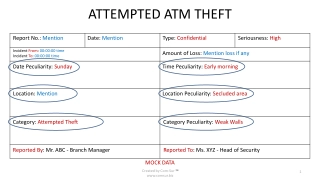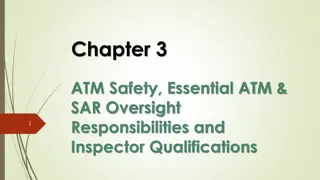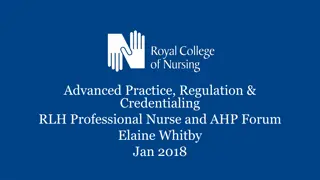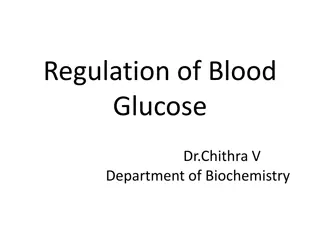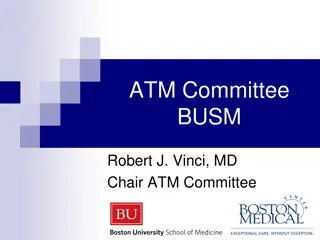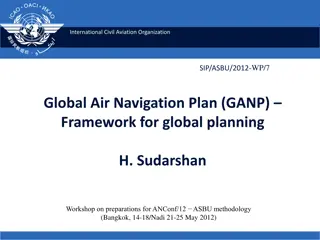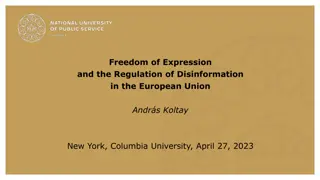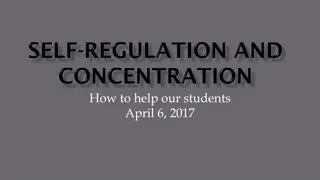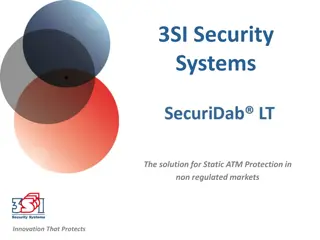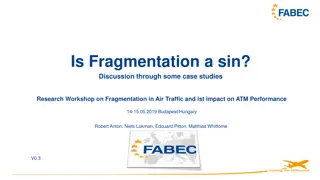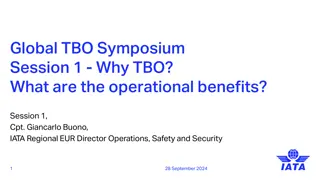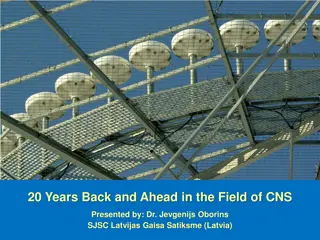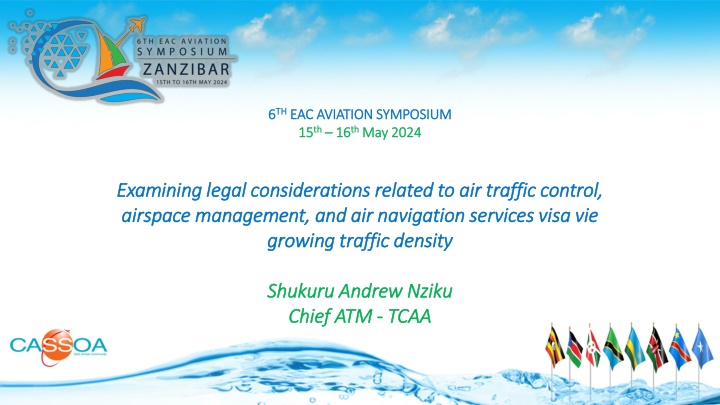
Legal Considerations in Air Traffic Control and Aviation Symposium
Explore legal considerations in air traffic control, airspace management, and air navigation services highlighted at the EAC Aviation Symposium. Learn about the growing traffic density challenges and regional initiatives aiming to manage them effectively. Discover key aspects of the global ATM initiatives for seamless operations in the aviation industry.
Download Presentation

Please find below an Image/Link to download the presentation.
The content on the website is provided AS IS for your information and personal use only. It may not be sold, licensed, or shared on other websites without obtaining consent from the author. If you encounter any issues during the download, it is possible that the publisher has removed the file from their server.
You are allowed to download the files provided on this website for personal or commercial use, subject to the condition that they are used lawfully. All files are the property of their respective owners.
The content on the website is provided AS IS for your information and personal use only. It may not be sold, licensed, or shared on other websites without obtaining consent from the author.
E N D
Presentation Transcript
6 6TH THEAC AVIATION SYMPOSIUM EAC AVIATION SYMPOSIUM 15 15th th 16 16th thMay 2024 May 2024 Examining legal considerations related to air traffic control, Examining legal considerations related to air traffic control, airspace management, and air navigation services visa vie airspace management, and air navigation services visa vie growing traffic density growing traffic density Shukuru Shukuru Andrew Chief ATM Chief ATM - - TCAA Andrew Nziku TCAA Nziku
SCOPE 1. Introduction 2. ATM regional initiatives and enablers to manage growing traffic density 3. Way-forward
INTRODUCTION i. Facts Aviation industry is highly controlled and regulated due to its inherent risks involved. Global air traffic has doubled in size once every 15 years since 1977 and will continue to do so (Doc 9750 - GANP). ii. ICAO Vision on ATM Operational Concept (Refer Doc 9854 GATMOC) ICAO defined 7 interdependent concept components that will be integrated to form the Future ATM system.
INTRODUCTION a) Airspace Organization and Management (AOM) b) Aerodrome Operations (AO) c) Demand and Capacity Balancing (DCB) d) Traffic Synchronization (TS) e) Conflict Management (CM) f) Airspace User Operations (AUO) g) ATM Service Delivery Management (ATM SDM)
GLOBAL ATM INITIATIVES ASBU FRAMEWORK Global initiative to reach SEAMLESS OPERATIONS in ANS and Airport operations. Strategic Plan: Requirements: GANP ASBU Framework Block 0 up to 2013 Block 1 up to 2019 Block 2 up to 2025 Block 3 up to 2031 Block 4 up to 2037 Interoperability of ATM systems Harmonization of procedures
GLOBAL ATM INITIATIVES. 1. Free Routing Airspace (FRA) B1/1 FRA concept represents a significant step forward in ATM, offering benefits in terms of efficiency, flexibility, and environmental sustainability for both airlines and airspace authorities. FRA is more effective when applied in large airspace. Regulatory Considerations: FRA implementation require updates to regulations, airspace designations, and operational procedures to ensure compliance with safety standards and requirements.
HCMM FZAA: 1837 nm HSSM FZQA: 1288 nm HAAB FAOR: 850 nm in EAC
GLOBAL ATM INITIATIVES. 2. Air Traffic Flow Management (ATFM) Annex 11 (ATS) paragraph 3.7.5.1 states that ATFM shall be implemented for airspace where air traffic demand at times exceeds, or is expected to exceed, the declared capacity of the ATC services concerned The modern concept of ATFM has evolved to facilitate the safe, orderly and expeditious flow of air traffic by ensuring that ATC capacity is optimized and utilized to the maximum extent possible, and allowing the traffic demand to be compatible with ATC capacity.(Doc 9971 paragraph 1.2.3)
GLOBAL ATM INITIATIVES. Reginal ATFM is more effective as compared to National ATFM in realizing safety, efficiency, environment impact mitigation and cost saving for airlines. Implementation of regional ATFM require harmonization of regulations and operational procedures as well as reviewing letters of agreements.
GLOBAL ATM INITIATIVES. 3. Standardized Training of Personnel Standardized/Harmonized training of personnel is essential for ensuring uniform standards of safety and competence across EAC region. It involves aligning the curriculum, practical training, assessment criteria and certification/licensing to ensure consistency in skills and knowledge.
ENABLES 1. Effective Utilization of Surveillance Systems in the region. Implementation of AIDC between adjacent FIRs to automate ATC coordination and reduce workload to air traffic controllers. Guidance material is required for EAC/Africa region Sharing of surveillance data between adjacent FIRs will increase coverage and reliability.
ENABLES. 2. Artificial Intelligence (AI) AI are systems that can perform tasks that would otherwise require human intelligence. AI-based system will help ATM in the following aspects: Conflict resolution advisory Demand prediction Remote towers Unmanned Traffic Management (UTM) Weather impact prediction, etc.
3. WAY FORWARD Harmonizing regulatory requirements across EAC member states is essential to ensure seamless operations and avoid inconsistencies that could compromise safety and efficiency.
References Doc 9750 Doc 9971 Doc 10118



